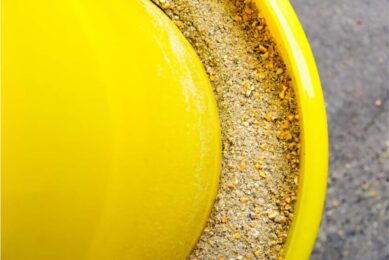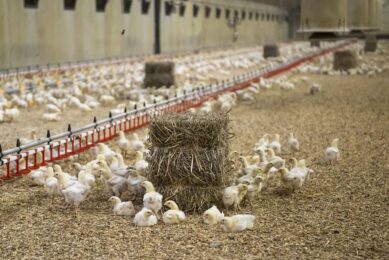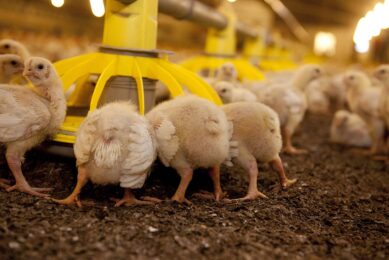The value of fish silage for broilers

The inclusion of fish silage in broiler diets leads to improved growth performance and meat quality. Using materials that would otherwise be dumped offshore reduces waste and environmental pollution while providing a good source of essential amino acids and minerals.
The global recurrence of diseases such as African Swine Fever (ASF) is driving the high demand for poultrymeat products. This increased demand puts pressure on poultry feedstuffs, calling for new feed resources and greater utilisation efficiency.
The feed industry has been compelled to search for sustainable alternatives.
Conversely, the ongoing climatic change coupled with the food-feed-fuel competition makes the future availability of high cost conventional feed resources, such as soybean meal and fishmeal, uncertain. The feed industry has been compelled to search for sustainable alternatives. Fish silage is a potential alternative source of protein in animal feed.
Why fish silage?
The world is facing growing environmental concerns. Fish silage could be part of the solution; it uses materials which would otherwise be dumped offshore and cause environmental pollution. This material – which consists of fish waste products like heads, frames and internal organs – is turned into animal feed, thereby reducing environmental problems. Fish silage can be produced where the supply of fish for fishmeal production is limited or too expensive – which is commonly the case. Fish silage production is a simple process that consists of 3 basic steps, namely grinding, acidifying and storage.
A good source of essential amino acids and minerals
Anaerobic storage conditions allow long-term storage which is less prone to oxidation and rancidity. In addition, acid ensilage decreases the pH, thus inhibiting the growth of most pathogenic bacteria. Fish silage is also a good source of essential amino acids and minerals. Its amino acid composition resembles that of fishmeal, provided it is made from the same type of raw materials.
A study to determine nutritional value
Researchers from the University of Nayarit in Mexico conducted a study to investigate the nutritional value of fish silage in terms of growth performance and meat quality in broilers (day-old to 28 days). A fish silage: soybean meal mixture (ratio 1:1 w/w) was used to prepare 4 diets with different inclusion levels (0%, 10%, 20% and 30%).
Improved poultry performance
The researchers found an increased body weight gain in chickens fed the fish silage-soybean meal mixture compared to the unsupplemented diet. The inclusion of fish silage in the diet improved feed conversion in broilers – it was suggested that this may be due to hydrolysed protein during the silage fermentation process and the supply of essential amino acids, such as histidine, threonine, methionine, glycine, alanine and tyrosine present in fish silage. In this study, the amino acid content was even higher in fish silage compared to fishmeal. For the total period (28 days), a 10% improvement in the feed conversion ratio (FCR) was observed at the 20% inclusion level. The feed intake in the fish silage diet was similar to the unsupplemented diet.

Meat quality
For the 3 inclusion levels (10%, 20% and 30%), meat juiciness and tenderness were better and the overall meat quality was also better, according to the panellists who assessed the meat quality characteristics. A fishy odour is the main challenge when high levels of fish feedstuffs are incorporated in diets. The researchers suggested that their present findings could be valuable because the addition of a fish silage: soybean mixture of up to 30% in the feed did not alter the sensory quality of broiler meat.
Swarms of locusts to become chicken feed
Enormous swarms of locusts – about 60 million insects – have caused major devastation to crops and livelihoods in countries in East Africa, Asia and the Middle East. Scientists have come up with a way to turn these critters into chicken feed. Read more…
Similar to the first study in Mexico, researchers at the Agricultural University of Norway also studied the effects of dietary fish silage and fish fat on the growth performance and meat quality of broilers (day-old to 35 days). The treatments were a control diet, 2 test diets with 50 g/kg fish silage and different levels of fish fat (6 or 8 g/kg), and 2 diets with 100 g/kg fish silage and higher levels of fish fat (8 or 10 g/kg). A total of 5 treatment groups were used to study meat quality: the control diet and 4 test diets each containing 50 g/kg fish silage and different levels of fish fat (2, 9, 17 or 25 g/kg).
…an improvement in growth rate and FCR
An inclusion level of up to 100 g/kg diet, corresponding to 21% of the total protein, showed a positive effect on growth performance. This high inclusion level (100 g/kg fish silage and 10 g/kg fish fat) showed an improvement in growth rate and FCR of 8% and 4%, respectively.
Be careful with fat
In this study, dietary inclusion of fish fat reduced plasma levels of vitamin E and ceruloplasmin (which catalyses the oxidation of various substrates, such as amines and catechols), indicating that the use of high-fat fish by-products increases the antioxidant requirement of broilers. High levels of fish fat may reduce the sensory quality of broiler meat. In the Norwegian study, the researchers found amounts of 17 g/kg fish fat or more caused ‘off-flavours’ in meat. They suggested that fish fat levels below 10 g/kg in broiler diets should not cause flavour problems in broiler meat.
Nutritional variations
Nutritional composition is an important factor in determining inclusion levels: fish silages show variations in nutrient composition which are due to differences in the type of fish, by-catch or fish part that have been processed in the silage. However, when fed at optimum levels, fish silage improves the growth performance of broilers without compromising meat quality. Overall, fish silage offers a potential environmentally-friendly alternative to partial replacement of expensive feedstuffs such as soybean meal and fishmeal.
Join 31,000+ subscribers
Subscribe to our newsletter to stay updated about all the need-to-know content in the poultry sector, three times a week. Beheer
Beheer








 WP Admin
WP Admin  Bewerk bericht
Bewerk bericht